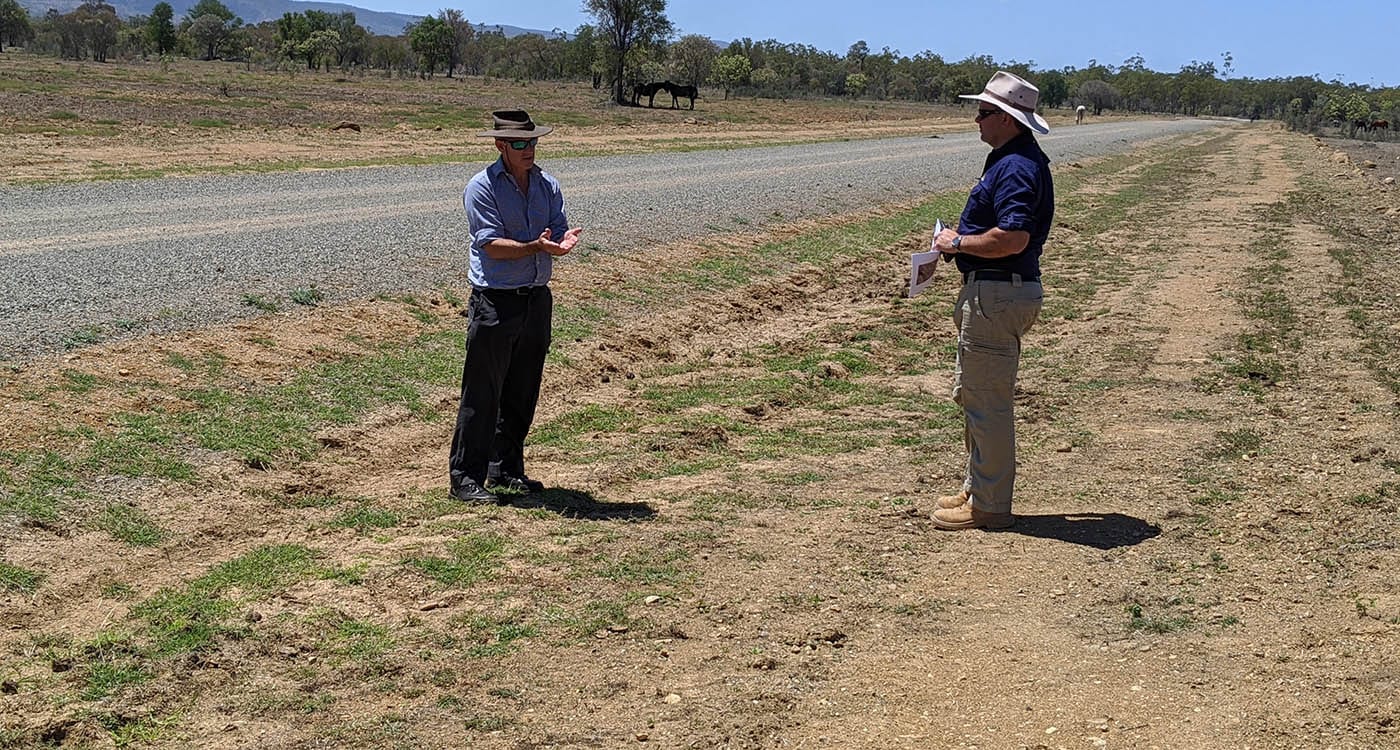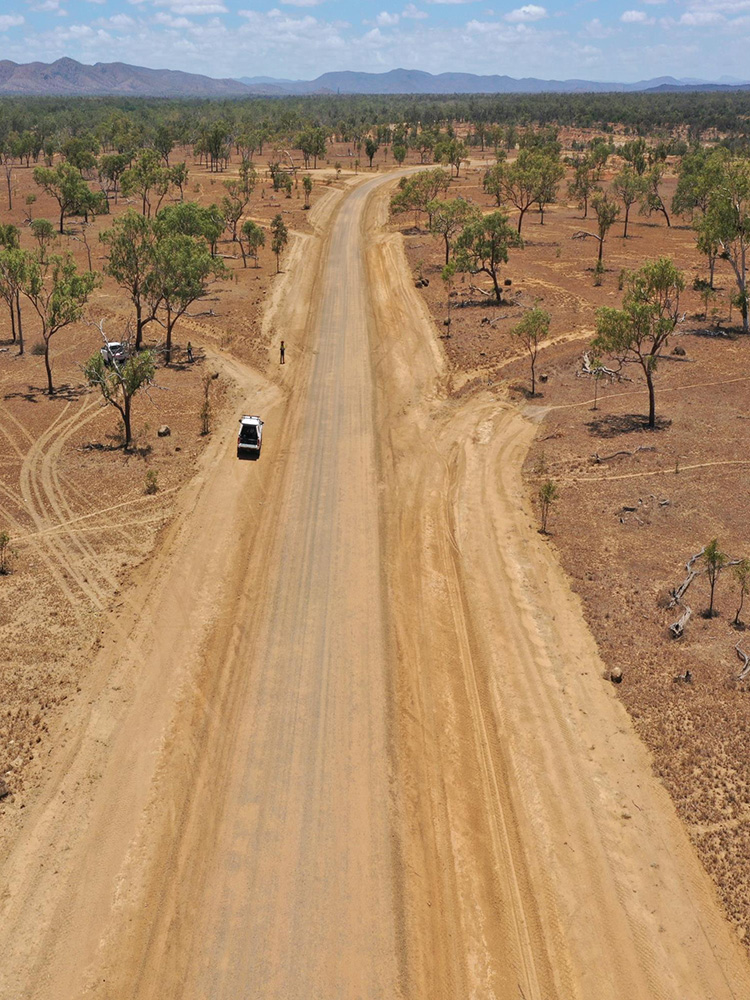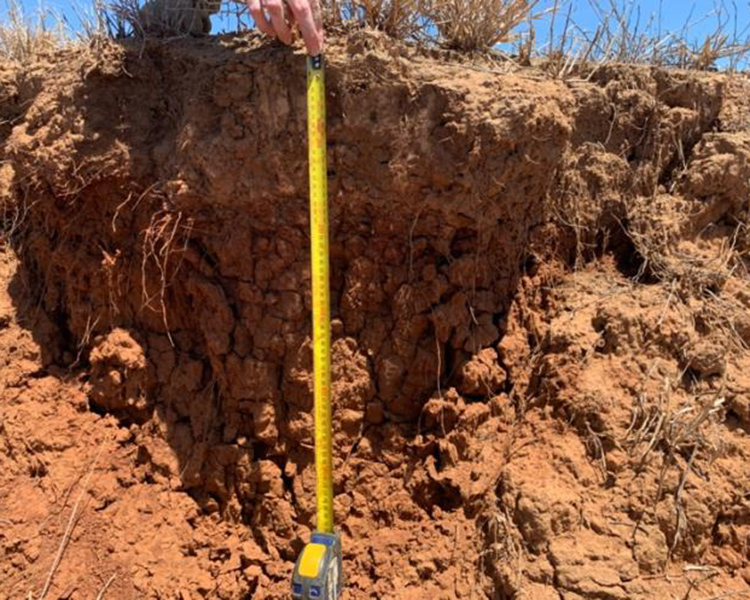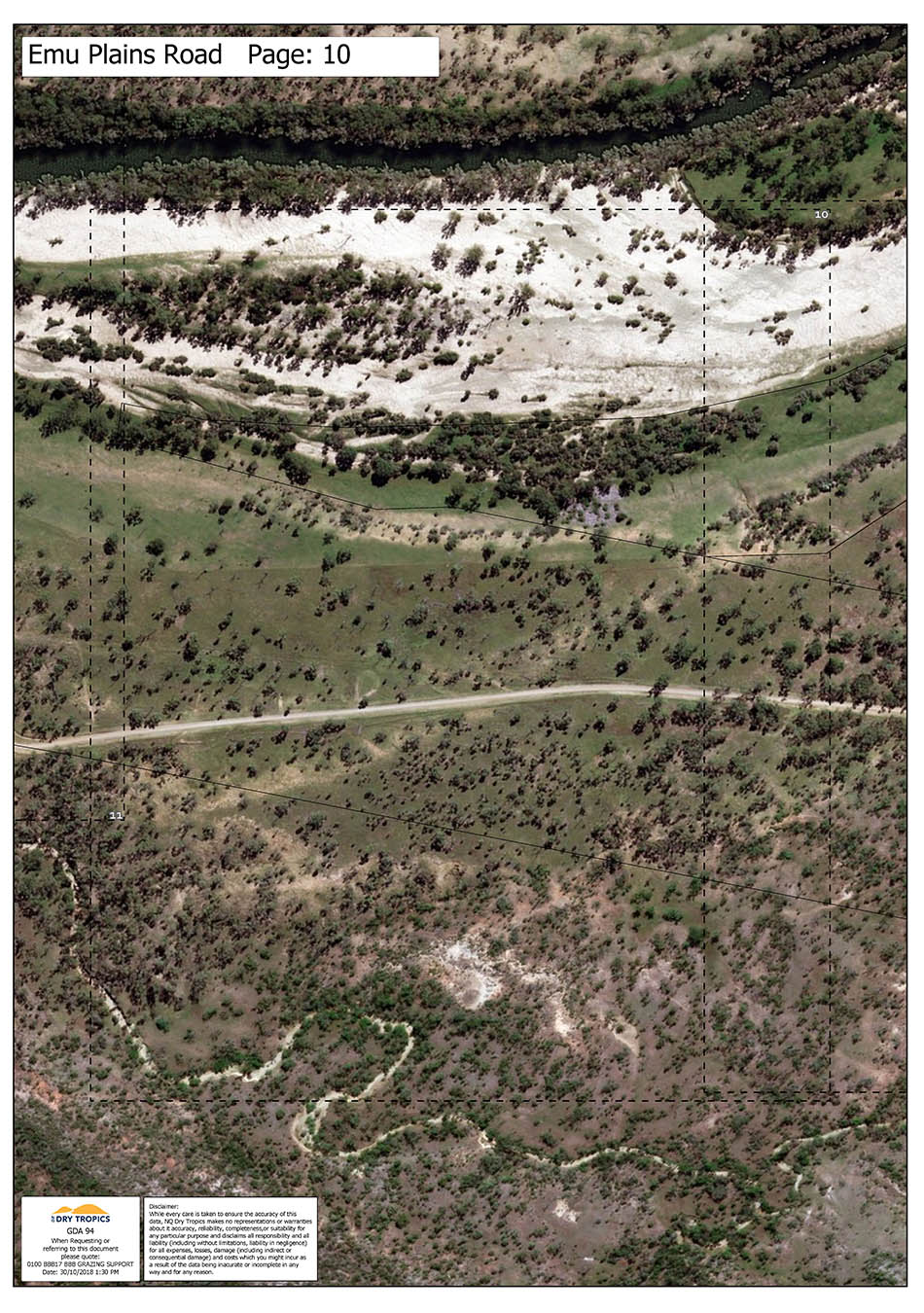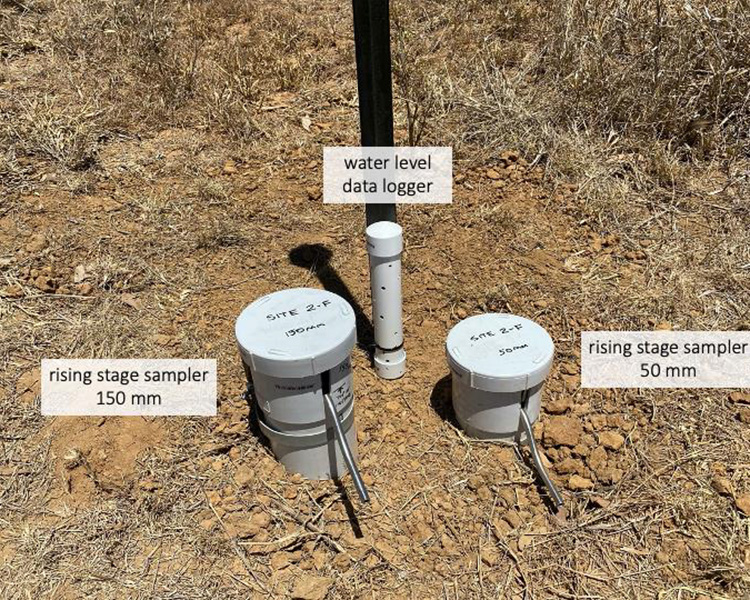
Scott Hardy, WRC (left) and Daniel Hazelman, NQ Dry Tropics’ Landscape Remediation Officer discuss drains on roadways.
Controlling the flow of water runoff from rural roads is a big task. Photo: Fruition Environmental.
Project investigates how best to manage rural road runoff
The LDC project, Whitsunday Regional Council and Fruition Environmental is monitoring fine sediment export from V bottom and flat bottom drains in the BBB catchment.
Good road drainage and maintenance is the best way to combat water’s damaging influence – keeping water off, out of, and away from the road.
The challenge rests in simultaneously preserving roads and the environment in a safe and cost-effective manner.
That’s why NQ Dry Tropics’ LDC project, Whitsunday Regional Council (WRC) and Fruition Environmental is working on a collaborative project to monitor any difference in fine sediment export from V bottom and flat bottom drains in the BBB catchment.
There is growing recognition that roadside stormwater may contribute towards off-road erosion. It is therefore important to better understand how the stormwater flow characteristics may vary between a V bottom and flat bottom drain.
The results of the roadside water quality monitoring project will help WRC assess how sediment export from V bottom and flat bottom drains can be considered in the cost benefit assessment of road design and maintenance. However, it is recognised that further investigation may be required.
LGA water plan
The Local Government Association of Queensland (LGAQ) has outlined three initiatives to deliver cleaner water flows to the sea in its Reef Councils’ Rescue Plan: Cleaner Water for the Reef.
The Rescue Plan’s ‘Cleaner Road Runoff’ initiative has identified several activities to be undertaken by reef councils. These are:
- establishing a baseline and monitoring program;
- developing a suite of best practice measures for on-ground implementation and evaluation; and
- capacity building, training and information to enable transport engineers and road managers to improve the design and maintenance of unsealed roads.
The Roadside Water Quality Monitoring project, a collaboration between NQ Dry Tropics, Whitsunday Regional Council, and Fruition Environmental, provides an opportunity to share data about fine sediment export from V drains and flat bottom drains.
Water quality monitoring sites
Three road table drain sites were identified along Emu Plains Road, 28km south of Collinsville.
Permits were gained from WRC for work within the road reserve, and Fruition Environmental installed the water quality monitoring equipment at each site.
Each site had a flat bottom table drain constructed on one side of the road, and a V bottom table drain built on the other side (a total of six drains that were monitored). Work was carried out to grade the control and treatment table drains to ensure each table drain had the same road gradient and catchment area.
The three control sites are located at the outlet (drainage turnout) of the V drains and the three treatment sites at the outlet of the flat bottom drain.
Site monitoring includes:
- water quality data via Rising Stage Samplers (RSS) to measure fine sediment concentrations;
- soil sampling to understand the soil profile and fine sediment export potential of the site;
- ground control points to enable repeat drone imagery to indicate soil movement; and
- photo points of each monitoring site as a visual indicator of the site over time (i.e. differences in erosion and revegetation).
Preliminary review
A preliminary review of initial results showed the highest fine sediments came from the first rain event post on-ground works. This was expected, albeit there was a higher percentage of fine sediments in these samples than initially anticipated.
Of all six monitored locations, all but one collected consistent samples allowing important data to be captured. Monitored results are currently being analysed by TropWATER and will be available in the coming weeks.
Project constraints
Further sampling is required from a wider distribution of sites to give confidence in the results. A larger population of tests across varying rainfall events, wet and dry season impacts will provide a trend on how sediment is mobilised under varying conditions in flat bottom and V bottom dains.
The LDC project believes there is a strong case to continue the roadside water quality monitoring project.
PICTURED RIGHT: Aerial survey of Emu Creek Road helped inform the project by documenting the condition of the land before the project began. Photo: Fruition Environmental.
Rapidly-flowing runoff can cause erosion. Photo: Fruition Envrionmental.
Some of the monitoring devices used to compare V bottom and flat bottom drains. Photo: Fruition Envrionmental.

